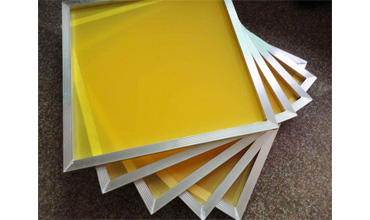Printing method for screen printing
Nov. 27, 2019
There are usually two types of screen printing, namely manual printing and mechanical printing.
Manual printing refers to the movement of the printing plate up and down from the continuous paper to the delivery, and the scraping and printing are all manual operations.
Mechanical printing means that the printing process is completed by mechanical action. Among them, it is divided into semi-automatic and fully automatic printing. Semi-automatic means that the substrate is put in and taken out by manual operation, and printing is done by machinery; fully automatic means that the entire printing process is completed by machinery.
There is also a fast and easy curved screen printing method for live screen printing, that is, the glass printing mesh layout is removed and directly attached to the surface of the substrate for printing. The surface screen printing method can be used to print a large number of processed printed products, such as latex plastic buckets, pure buckets, washbasins, thermos bottles, cups, bowls, plates and other products. At the same time, this method can be used to print signboard characters on cars, and can also be printed on special-shaped planes.
Production of the surface screen version: First, the photosensitive text and graphic version is dried and repaired, then taken off and cut according to the size. Wood chips or aluminum sheets are used at the two ends of the screen plate as sticking sticks for the frame, or they can be directly fixed with adhesive, so that the required live-screen screen plate can be made. How to operate the surface screen: Select different printing materials for deployment according to the substrate: First select the flat plate and plate to prepare the ink. Then, one person holds the surface screen plate with both hands and presses the printed part tightly to the substrate On the object surface, another person dipped the ink evenly on the upper surface of the squeegee with a doctor blade, and then placed the squeegee on the squeegee evenly on the plate surface for uniform scraping.
Polyester Printing Mesh
If the area of the printed graphics is too large, you can pour the ink on the polyester printing mesh according to the situation, but do not let the ink flow out of the substrate. Be careful not to mix the ink too thin and not too dry. Printing and painting in a small area can be operated by one person. The method is to stick one end of the printing plate to the desired position of the printing machine with packaging tape, and then use the other hand to hold the printing plate firmly on the printing material. For printing. Note from the beginning: Be sure to follow the direction of the end of the tape where the tape is lighter. If two people operate the starting advertisement, the same is true. This method of printing has convenient operation, flexible requirements for substrates, and can be large and small. Can be more or less, has the advantage of low cost and energy saving.
Screen printing is not only suitable for general paper printing, but also has a wide range of adaptability. For example: ceramics, glass, printed circuit boards, etc. Depending on the texture of the substrate, the printing is not the same. Although each series has an inseparable internal connection, due to the different physical materials (that is, different chemical and physical properties), each has its own particularity. So usually people are divided into different categories according to the substrate: paper printing, plastic printing, ceramic printing, glass printing, circuit board printing, metal printing, textile printing and other categories. This results in a relatively independent printing system.








